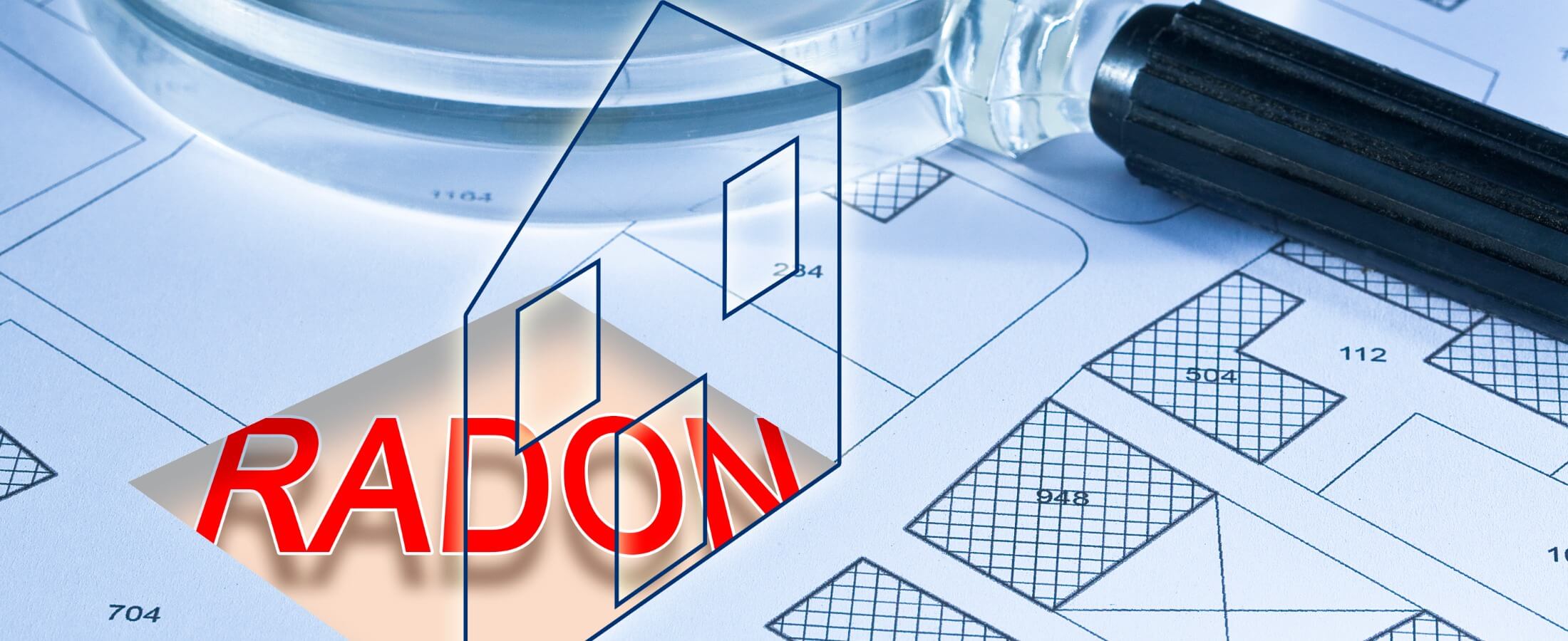10 Radon Myths put to the Test
On the Internet and in the media there are many myths about radon. But what is it about the representations on this topic? We want to create more clarity and clear up the 10 most common radon myths:
Myth 1: Radon does not pose a danger
Myth 2: Radon measurement is an expensive and protracted affair
Myth 3: Radon cannot be eliminated in every home
Myth 4: Only certain building types are affected by radon
Myth 5: Only people in radon risk areas are at risk
Myth 6: The radon values of the neighbour also apply to my house
Myth 7: Radon dissolved in water is also dangerous
Myth 8: Radon contaminated houses are hard to sell
Myth 9: Since I lived in a radon-contaminated house for many years, I don't need to change anything now. Now it's too late anyway.
Myth 10: A short-term measurement is not sufficient to justify remediation measures. A long-term measurement is always required.
Myth 1: Radon does not pose a danger
With regard to radon, there are many uncertainties and some may wonder who to believe. Some doctors and scientists used to argue that radon is only harmful in high doses. The scientists referred thereby to studies bspw. of Dr. Bernhard Cohen, which maintained exactly this. But the results of this study have long since been refuted. Investigations by the WHO in 1995 showed that Cohen's studies had considerable deficiencies.
Today, the American Environmental Protection Agency (EPA), the Disease Control Agency, and the American Association of Pulmonary Physicians agrees: Radon provides a high level of a health hazard. Especially long-term exposure increases the probability, to develop lung cancer.
Myth 2: Radon measurement is an expensive and protracted affair
This myth persists, but radon measurements are no longer a problem even for technical laymen. Modern equipment is cheap and can often be borrowed. Thus one comes with a borrowing equipment only once at the expense of 30-40 euro (for a short time measurement of 5-7 days). If you have been able to detect radon in higher concentrations at home or if you live in a radon risk area, you should buy an active measuring device. Even a short-term measurement of a few days gives clear indications of the stress you are dealing with in your home. A long-term measurement gives you even more meaningful values.
Myth 3: Radon can not be eliminated in every home
First of all, it must be said that radon is not a serious problem in all homes. The buildings most affected are those in radon risk areas and at so-called radon hotspots, which, however, can occur anywhere in Germany and throughout Europe. However, as soon as radon is detected, a satisfactory solution to the problem can always be found. Simple measures that improve the exposure situation (e.g. ventilation) are often sufficient. If the values are still high, additional remedial measures can prevent the gas from entering the building.
Myth 4: Only certain building types are affected by radon
This myth is also wrong. New and old buildings can be equally affected by radon. The concentration of radioactive gas depends on many factors, including soil conditions, weather conditions and the current season. The building material and structure also have an influence on the level of radon concentration in buildings. Thus it can be said that all house types can be affected by radon.
Myth 5: Only people in radon risk areas are at risk
On some websites you can read that you only have to worry about radon if you live in a radon risk area. But that's not right. It is true that there are risk areas in Germany and Europe that are particularly heavily contaminated with radon. Nevertheless, high radon levels can also occur in all other areas. The level of radon concentration in ground-level air depends, among other things, on soil conditions, weather conditions, the season, the uranium content of the soil and many other factors. Since radon values can also fluctuate strongly from house to house, measurements should always also be taken in one's own building.
Myth 6: The radon values of the neighbour also apply to my house.
This is a very common radon myth, but unfortunately it is wrong. Studies have shown that soil composition and permeability can vary greatly from house to house. Both are important factors that have a strong influence on the radon concentration in a house. But also the construction of the house and the type of sealing of possible radon entry paths determine the amount of radioactive gas in a building. The 'I-quest-me-next-neighbour-to-his-radon values' method is therefore not very meaningful and does not prevent you from having to measure the radon values yourself in order to achieve safety.
Myth 7: Radon dissolved in water is also dangerous
Radon gas is often dissolved in water, which can be released, for example, when showering in the shower cubicle. Nevertheless, radon, which penetrates from the floor into basement and ground floor rooms, is much more dangerous. However, if you have your own well, it is essential to measure the radon content in the water. Otherwise, you can obtain the radon values in the water from your local waterworks.
Myth 8: Radon contaminated houses are hard to sell
It is true that houses with radon problems are not particularly attractive to home buyers. However, even minor renovation measures can significantly reduce radon levels in buildings. Better it would be to be introduced naturally already before the building of houses measures against Radon (e.g. the shifting of a Radonschutzfolie). But also afterwards some can be made (e.g. installation of ventilation systems or sealing of cracks and Radoneintrittspfden). Real estate agents are therefore certain that renovated or ventilated buildings will achieve the same or even higher prices on the market than buildings where no radon renovation measures have been carried out.
Myth 9: Since I lived in a radon-contaminated house for many years, I don't need to change anything now. Now it's too late anyway.
This myth is also wrong. Radon has a long-term effect. A short-term radon exposure is comparatively harmless. The risk of lung cancer rises sharply, especially if a person has been exposed to high radon concentrations for many years. It is therefore never too late for radon measurement and radon remediation. The earlier the radon problem is eliminated, the better for your health.
Myth 10: A short-term measurement is not sufficient to justify remediation measures. A long-term measurement is always required.
This myth is also wrong. With a long-term measurement you are always on the safe side, especially if the measurement is carried out during the heating period (winter). But even a short-term measurement can deliver good results. In particular, if the measured values are high (> 200 Bq/m3), the measurement results for a short time measurement (5-7 days) are also quite meaningful. It is even better if you simply make 2-3 short time measurements one after the other (also in different rooms). If the average values regularly exceed 200-300 Bq/m3, a long-term measurement would be recommended afterwards.

Do you need help?
We will be glad to help you.
We will be happy to assist you in selecting the appropriate measuring device and also advise you on possible protection solutions.
Just contact us!
Mo-Thu 09:00 am – 4:00 pm / Fr 09:00 am – 2:00 pm
Phone: 0049 9076-919 9835
Email: info@radonshop.com

